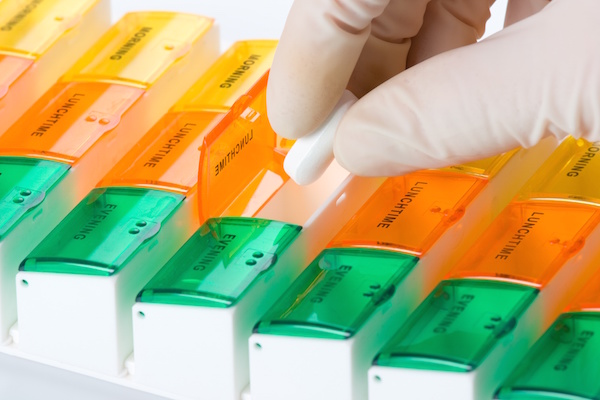
THURSDAY, April 8 (HealthDay News) — Many Spanish-speaking people in the United States receive prescription instructions from the pharmacy so poorly translated that the medications are potentially hazardous to their health, a new study shows.
The errors occur largely because of deficiencies in computer programs that most pharmacies rely on to translate medication information from English to Spanish, said lead researcher Dr. Iman Sharif, chief of the division of general pediatrics at the Nemours/Alfred I. duPont Hospital for Children in Wilmington, Del.
“The technologies that are currently available to produce instructions in the patient’s language are inadequate,” Sharif said.
Half of the Spanish-language prescription labels reviewed for the study contained errors, and some of those errors could result in life-threatening situations if misinterpreted by the patient, Sharif said.
The study is published in the May issue of Pediatrics.
Of the New York City pharmacies surveyed that provide Spanish-language labels, more than four of every five used a computer program to translate their labels from English to Spanish. Nearly all the pharmacies said they had someone doublecheck the labels for errors, but researchers found dozens of examples of poorly translated instructions.
A common problem was “Spanglish,” Sharif said. The programs produced a mix of English and Spanish on the labels, creating confusing and difficult-to-read instructions.
The use of “Spanglish” also created some potentially dangerous situations. For example, the word “once” means “eleven” in Spanish. “You mean to say ‘once,’ as in ‘take once a day,’ and a Spanish-speaking person could interpret that to mean ‘eleven,'” Sharif said. Such a mistake could result in an overdose.
Other phrases that weren’t accurately translated include “dropperfuls,” “apply topically,” “for seven days,” “for 30 days,” “apply to affected areas,” “with juice” and “take with food.”
Misspellings also created errors. Incorrect use of the word “poca” for the word “boca” meant patients were told “by the little” instead of “by the mouth.” One set of instructions included “dos besos,” which means “two kisses”; the intended instructions likely were “dos veces,” which means “two times.”
Poor translations specifically cited in the study included:
- “Take 1.2 aldia give dropperfuls with juice eleven to day.”
- “Taking 0.6 mL 2 times to the day by the little with juice.”
- “Apply to affected area twice to the indicated day like.”
Dr. David Flockhart, director of the division of clinical pharmacology at the Indiana University School of Medicine in Indianapolis, said it’s not surprising that these computer-generated errors are occurring.
“Word-for-word, you probably could get it right, but you can’t get the entire sense of what’s being communicated through a computer program,” Flockhart said.
The sheer amount of information that a pharmacist must provide day-to-day also makes it difficult for people with a shaky grasp of Spanish to catch errors. “It’s a particular issue because the PDR [Physicians Desk Reference] is so huge,” Flockhart said. For pharmacists who don’t speak Spanish, to translate it is nearly impossible. There’s too much information.”
Sharif believes these errors help explain why non-English speakers tend to receive poorer health care in the United States.
“This is something that is a critical contribution to disparities in care,” she said. “Many people who don’t speak English can’t understand how to use their medications. This is one piece of that puzzle.”
Noting that New York City requires prescription labeling in six other common languages, the authors said more research is needed to identify labeling hazards and safeguard non-English-speaking patients.
Also, software firms need to create better programs if patients are to be better served, since it’s unlikely that every pharmacy in the United States will be able to find and hire qualified live interpreters to produce labels and instructions, Sharif said.
“We need help,” she said. “We need the technology industry to step up and improve the way pharmacy prescription software translates drug instructions.”
Flockhart takes a different view, saying the real solution is to hire more bilingual pharmacists. “I doubt you could improve the software to the point where it’s as good as a pharmacist who speaks Spanish,” he said.
In the meantime, Spanish-speaking patients need to protect themselves. “My recommendation would be make sure you ask for an interpreter who speaks your language to explain how to use the prescribed medicine,” Sharif said.
More information
For tips on talking to your child’s pharmacist, see the Nemours Foundation.

